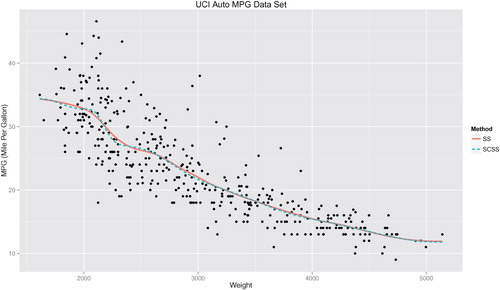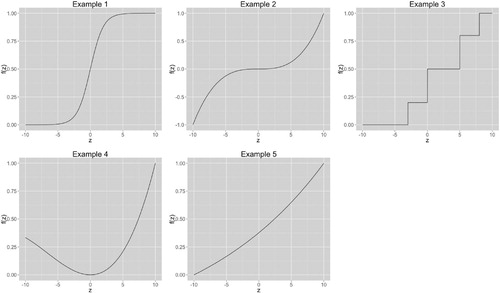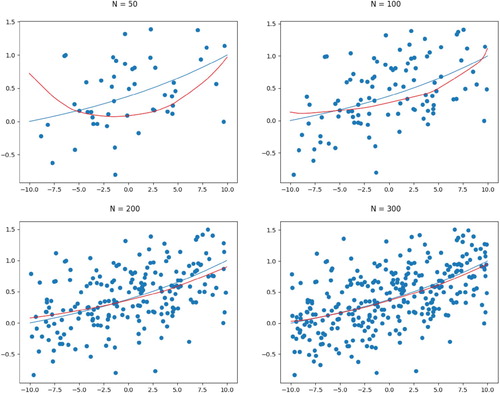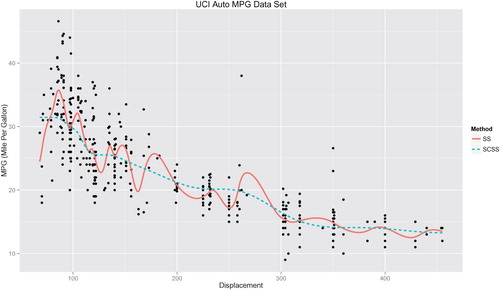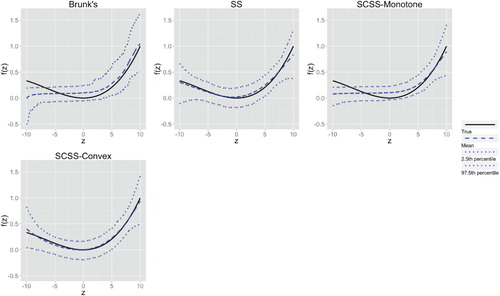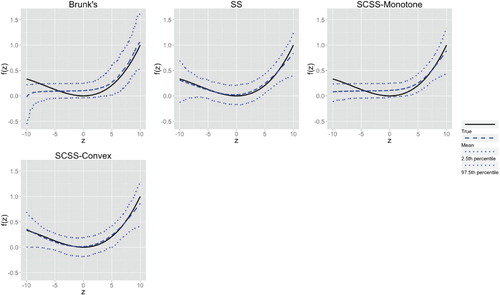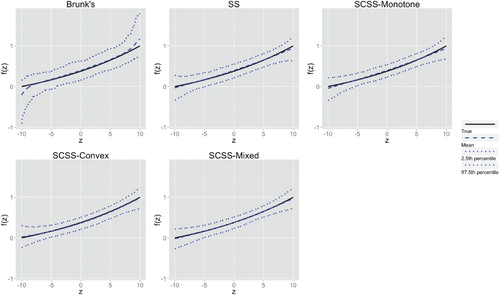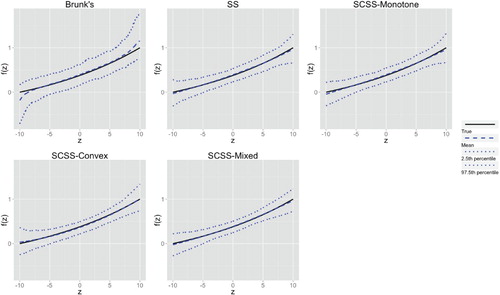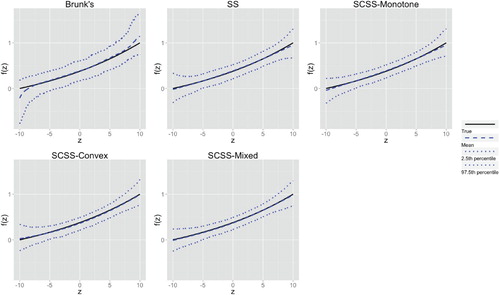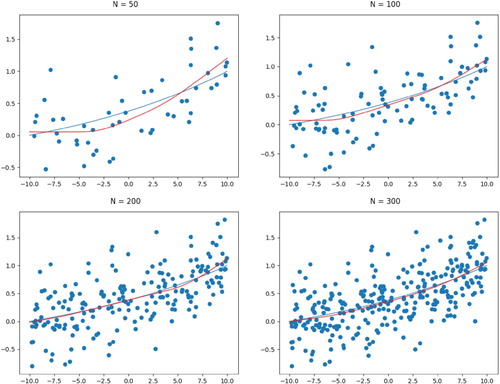Figures & data
Table 1. Simulation studies comparing SCSS and other estimators under different functions and errors settings.Averaged MSPE (
 ) and its standard error (
) and its standard error (
 ) over 500 repetitions are reported. NA entries correspond to methods with no applicable settings.
) over 500 repetitions are reported. NA entries correspond to methods with no applicable settings.
Table 2. Simulation studies measuring the convergence of SCSS based on the integrated mean squared errors.
Figure 3. Comparison between unconstrained (SS) and monotone constrained (SCSS) smoothing spline for the Auto MPG Data. The response is mpg, modelled as a function of weight.
